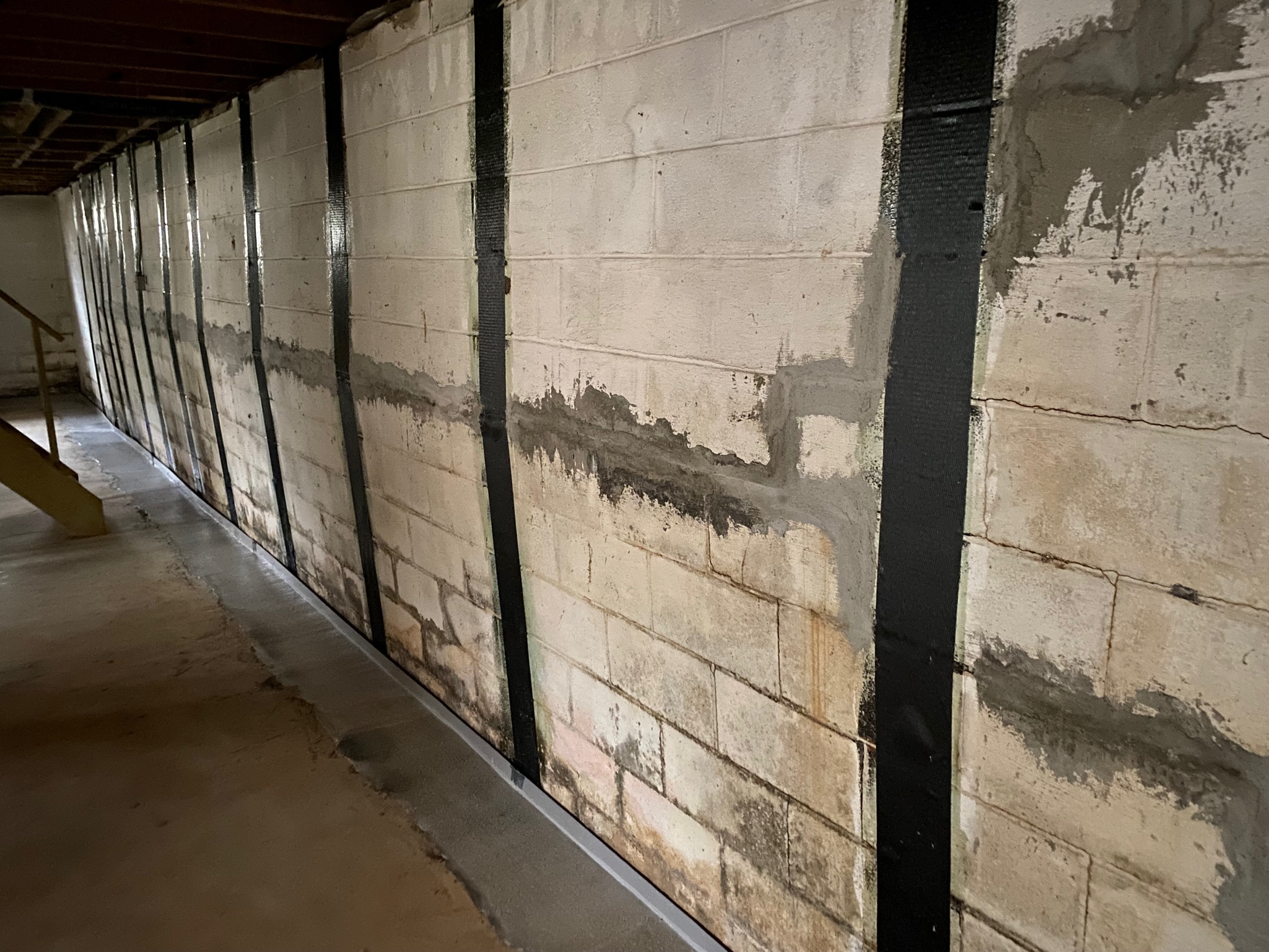 Most people are familiar with the idea of foundation settling when parts of a home slowly sink over time. But what happens when the opposite occurs, and a section of your foundation suddenly lifts? This less common but equally serious issue is called foundation upheaval, and it can cause just as much damage — if not more — than settlement.
Most people are familiar with the idea of foundation settling when parts of a home slowly sink over time. But what happens when the opposite occurs, and a section of your foundation suddenly lifts? This less common but equally serious issue is called foundation upheaval, and it can cause just as much damage — if not more — than settlement.
Foundation upheaval is typically caused by expanding soil beneath the foundation, which exerts upward pressure on the slab or footings. If left unaddressed, it can lead to cracked floors, buckled walls, plumbing damage, and significant structural instability.
In this article, we’ll explain what foundation upheaval is, what causes it, how to identify the warning signs, and the professional solutions used to stop it before it causes major problems.
🔑 Key Takeaways
- Foundation upheaval is the upward movement of a slab or footing due to soil expansion.
- Common causes include excess moisture, poor drainage, plumbing leaks, and expansive clay soils.
- Signs include lifted floors, cracking tile, sticking doors, and bowed interior walls.
- Left untreated, upheaval can damage plumbing and compromise your home’s structural integrity.
- Solutions include drainage control, soil moisture management, and slab or pier adjustments.
What Is Foundation Upheaval?
Foundation upheaval refers to the upward displacement of a portion of the home’s foundation. Instead of sinking like in settlement, the slab or footing rises unevenly, putting stress on the home’s structure.
Upheaval most commonly affects slab foundations but can also impact homes with basements or crawlspaces when footings or interior slab sections are affected.
Common Causes of Foundation Upheaval
1. Expansive Soils
Soils rich in clay (like those found in many parts of Virginia) expand when they absorb water. If moisture levels increase suddenly or unevenly beneath your home, the soil can push the foundation upward.
2. Poor Drainage
Water that pools around or under the foundation — from poor grading, clogged gutters, or short downspouts — contributes to uneven soil moisture. This leads to localized soil expansion and slab movement.
3. Plumbing Leaks
A leaking pipe beneath the slab can slowly saturate the soil in a concentrated area, causing it to swell and lift the concrete above it.
4. Frost Heave
In colder climates, moisture in the soil freezes and expands during winter. This frost heave can lift parts of the foundation, only to cause cracking and settling once it thaws.
5. Improper Site Preparation
If the fill soil beneath a slab wasn’t properly compacted or has inconsistent moisture retention, it may shift unpredictably, contributing to upheaval.
Warning Signs of Foundation Upheaval
Unlike settlement, which often causes cracks to widen at the top, upheaval causes structural elements to shift upward or buckle inward.
| Sign | What It May Indicate |
|---|---|
| Cracks in floor tiles or slabs | Upward slab movement pushing the material apart. |
| Interior doors sticking or misaligned | Frame distortion from rising floor section. |
| Gaps between floor and baseboard | Floor has lifted, leaving a visible gap. |
| Cracks in interior walls or ceilings | Pressure from below warping structural framing. |
| Uneven or tented flooring | Sections of floor bulging upward. |
| Slab higher in the middle than edges | Central upheaval common in moisture-rich soil. |
These signs often develop gradually but worsen over time if left untreated.
The Hidden Dangers of Foundation Upheaval
1. Structural Damage
Upheaval puts unnatural pressure on framing, walls, and roofing systems. Over time, this can lead to:
- Warped walls
- Bowed ceilings
- Cracked framing joints
2. Flooring and Finishing Damage
Tile, hardwood, and vinyl flooring are all vulnerable to upward movement. Buckling, cracking, or tenting floors may require complete replacement.
3. Plumbing Disruptions
Since plumbing lines often run beneath the slab, upheaval can twist or break pipes, leading to:
- Leaks
- Sewer backups
- High water bills
4. Interior Functionality Issues
Upheaval often leads to doors and windows that don’t close, misaligned cabinetry, and tilting countertops.
5. Costly Repairs Later
Like all foundation issues, the longer upheaval is ignored, the more extensive and expensive the solution becomes.
How Professionals Address Foundation Upheaval
Step 1: Professional Evaluation
The first step is a detailed inspection to determine whether the movement is caused by upheaval, settlement, or a combination of both. This includes:
- Laser leveling to check slab elevation changes.
- Soil moisture and composition testing.
- Plumbing pressure tests to identify leaks.
- Visual crack pattern assessment.
Step 2: Identify and Address the Cause
Plumbing Leak Repair
- If a pipe is leaking, it must be fixed before stabilization begins.
Drainage Improvement
- Downspouts are extended, gutters repaired, and yard grading is corrected.
- French drains may be added to divert water from the foundation.
Soil Moisture Management
- In cases of expansive soils, consistent moisture control prevents further swelling.
Step 3: Structural Solutions
Slab Adjustment
- In some cases, slab jacking can help restore levelness by lifting sunken edges to match upheaved sections.
Helical or Push Piers
- These are rarely used to push slabs down, but may help in supporting other areas to create balance and reduce strain on lifted zones.
Slab Replacement (in Severe Cases)
- If the slab is extensively cracked or warped, full replacement may be necessary — paired with improved drainage to prevent recurrence.
Real-Life Case: From Upheaval to Stability
A homeowner in Salem, VA, noticed that her kitchen tiles began to “tent” in the middle of the floor, forming a raised line that worsened with time. Nearby doors stuck, and a long crack appeared along the living room ceiling.
Seal-Tite Basement Waterproofing performed a full inspection and found:
- An underground plumbing leak beneath the slab
- Soil swelling due to excess moisture in the clay-rich soil
- Central slab upheaval pushing upward
Solution:
- Plumbing repairs to stop the leak
- Drainage correction and gutter extension
- Removal and releveling of affected slab sections
- Epoxy injection to seal cracks in walls and floors
Today, the home is structurally sound, and the new flooring sits perfectly level.
FAQs: Foundation Upheaval
Is upheaval the opposite of settlement?
Yes. While settlement is downward movement, upheaval is upward movement of the foundation due to expanding soil.
Can I fix foundation upheaval myself?
No. This problem is structural and often tied to deep soil or plumbing issues. DIY repairs won’t address the root cause and may make things worse.
Will replacing the floor fix the issue?
Only cosmetically — if the slab or soil beneath is still shifting, new floors will eventually fail again.
How can I prevent foundation upheaval?
Maintain consistent soil moisture, repair plumbing leaks immediately, and ensure your yard drains water away from the foundation.
Is upheaval more expensive to repair than settlement?
It depends. In some cases, upheaval requires slab replacement, which can be costly. However, addressing it early often reduces the total repair expense.
Conclusion: Don’t Let Your Foundation Rise Against You
Foundation upheaval is often misunderstood, but its impact can be just as damaging as foundation settlement — if not worse. Whether caused by water infiltration, clay soil expansion, or plumbing leaks, upward movement beneath your home puts stress on every part of the structure.
The good news? With early detection, expert diagnosis, and targeted solutions, you can stop foundation upheaval in its tracks and protect your home for the long haul.
If you suspect your slab is lifting, your floors are buckling, or your doors suddenly won’t close — don’t wait. Contact Seal-Tite Basement Waterproofing today for a professional foundation assessment. We’ll uncover the cause, create a customized solution, and restore your home’s stability from the ground up.

Seal-tite Basement Waterproofing Co. is a full service basement environment contractor. We carry an A+ Better Business Bureau rating. We repaired over 40,000 homes and structures in Virginia, West Virginia, Tennessee, and North Carolina. We are fully insured and licensed. We have worked in all types of locations, including residential and commercial locations, government agencies, colleges, hospitals, churches, and condo associations.
Seal-tite® offers a lifetime transferable warranty. We carry a Class A Contractor’s License and we are fully insured. Our satisfied customers range from government agencies to businesses, hospitals, colleges, churches, and thousands of homeowners. Your home is probably the single largest investment you will make in your lifetime. Don’t wait, call Seal-tite® to help make your home dry, safe and livable.

